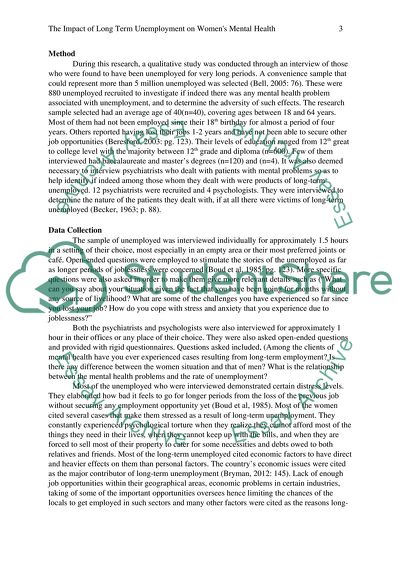The Impact of Long Term Unemployment on Women's Mental Health Report Example | Topics and Well Written Essays - 1000 words - 1. https://studentshare.org/psychology/1798810-reflective-ealuation-of-research-project
The Impact of Long Term Unemployment on Women'S Mental Health Report Example | Topics and Well Written Essays - 1000 Words - 1. https://studentshare.org/psychology/1798810-reflective-ealuation-of-research-project.


